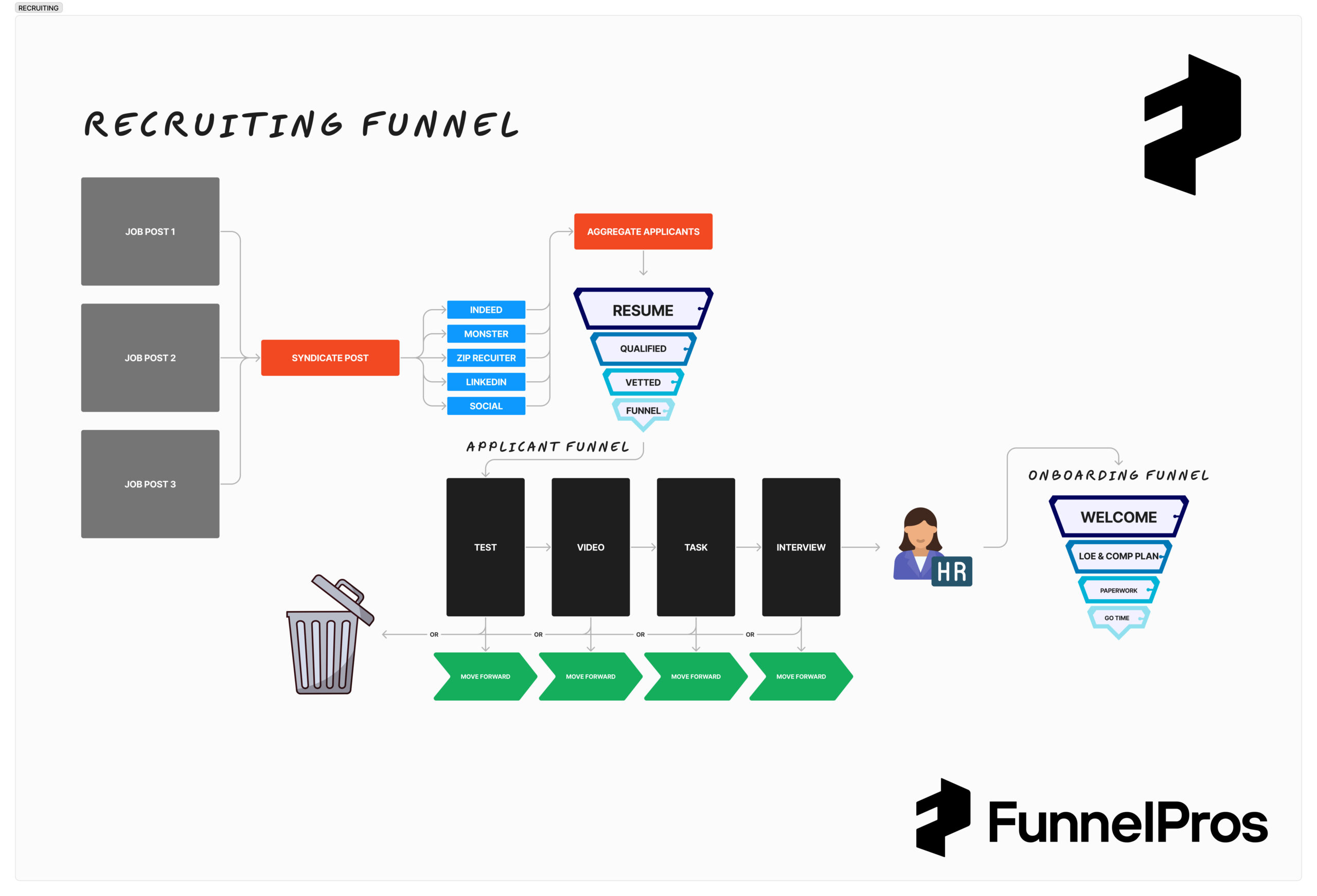Ultimate Guide to Marketing and Sales Funnels
What a Funnel Is, Use Cases, Misconceptions, and Industries We've Mastered
Table of Contents
Funnel Definition:
It makes sense that most people are confused about what a funnel actually is since its application to the marketing world has been redefined over and over by marketers. To us, here at FunnelPros, it’s a connected series of actions with a common goal.
According to Webster, a Funnel is a “utensil that is usually a hollow cone with a tube extending from the smaller end and that is designed to catch and direct a downward flow,” or as a verb, “to move to a focal point or into a conduit or central channel.”
The difference between a business with a clear funnel and one without is to imagine your business is a building. Some people find you through organic search (Google Maps, etc)—this is SEO. So, some people climb through the SEO window. Others will see your van on the road and remember your brand.
So you’ve got another group of people crawling through the “saw your van” window. Then you’ve got your PPC campaign running or your Facebook ads going. You now have another few groups of people climbing down the PPC chimney and through your Facebook ads window. Others see you on Nextdoor, or a community chat, or from canvassing or door knocking. The point is, without a funnel, everyone is pounding on all sides of your business and entering from all over. There’s no organization and there’s no uniform greeting.
With a funnel, no matter where your leads come from, they are funneled to the front door of your company and greeted the same way and move along the same conveyor belt from lead to customer. Not only that, but once they enter, you can now manage their contact information throughout the year and keep tabs on their servicing needs which inevitably increases your lifetime value.
Funnel Use Cases
A funnel doesn’t have to be only for marketing either. You can have a marketing funnel directing leads to a YES…
A sales funnel directing estimates to a close…
A recruiting funnel directing HR to qualified applicants…
And so forth.
A marketing funnel is one of the internal branches to a central operating system that every business needs. An operating system, to us here at FunnelPros, means automating every Standard Operating Procedure (SOP) in the book. The operating system of your business is a connected group of funnels that are all steering your business’s ship exactly where you want it to go, in every department of the building.

Funnel Misconceptions
Some people ask if “Marketing Funnel” means landing pages.
Not to us it doesn’t. I bet even Russel Brunson would agree that a landing page is simply a tool used in many funnels, but by no means defines it.
In fact, we rarely use landing pages and most funnel elements are working behind the scenes. You can see the engine of your Ferrari if you look, but for the most part all people see is the coat of shiny red paint layering the vehicle.
Most of how we construct funnels boils down to the messaging that each person gets throughout the year. Some people are leads (haven’t bought anything or have only hired you to service their home), some are customers (have made large purchases, usually this means buying equipment), and some are RAVING customers (loyalty members).
How will you differentiate your messaging? And how do you switch messaging when a lead turns into a customer after a few months, and how do you switch again when they sign up for your loyalty program a year later (all examples of course). Messaging consists of three things:
- Content
- Delivery
- Cadence
Cadence to us is the most important. How do you send three emails, two text messages, and a voicemail drop without annoying the lead to the point that they leave a bad review or call the cops?
Well, that takes strategy.
And when will these messages go out? And which one goes first, the text or the email? The call or the voicemail drop? The chicken or the egg?
What we do is pre-define the perfect method of communicating what the next step is to the lead at every stage of the pipeline and ensure that anything that does not need to be conducted manually is automated, and that what requires a manual touch is NOT automated.
Knowing what NOT to automate is also part of funnel construction.
The bottom line is every business should have a set of SOPs. Those SOPs should be documented and communicated to the entire team.
Then…
You should AUTOMATE those SOPs through a series of funnels, which will comprise your business’s operating system. That is what will bring in more revenue, that is what will add value to your business, and that is what we do.


